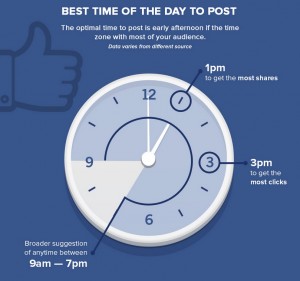 The gig economy
The gig economy
“If Uber, Lyft, and others don’t stop relying on contract workers, business could crumble. Is it time for a new definition of employee?” asks Fast Company magazine. The resounding answer is yes! Complementary talent.
The success of Uber, the app-based personal transportation service, has renewed interest and demand across business sectors to increase reliance on independent contractors. Uber’s dramatic profits and low overhead have inspired other companies to follow suit, and not just within the same industry. There’s also the cleaning service Handy, the grocery delivery offering from Instacart, courier solutions from Postmates and many others. Analysts predict that this much-hyped “gig economy” could generate as much as $ 10 billion in 2015.
A company like Handy can run with 20- to 30-percent lower labor costs than its competitors, which still employ direct-hire, full-time workers. So what’s the issue with the gig economy, some might ask? Despite the new term, the use of independent contractors — and the risks that accompany them — is a very old problem. And the recent rise of ICs is leading to a new spate of litigation. The likelihood of costly outcomes — tax penalties, legal fees and settlements associated with misclassification — could very well sabotage all those profits.
Attorneys could be the only beneficiaries of the gig economy
By now, most workforce industry organizations are familiar with the FedEx saga. In 2005, thousands of drivers sued the company, alleging they were employees and not independent contractors. Last summer, a federal appeals court concurred. The ruling was based on evidence that FedEx dictated drivers’ workloads, determined their service areas, provided training and directly managed their activities, including having FedEx personnel ride along with drivers to conduct performance evaluations. The case exposed an opportunity for the IRS and other regulatory agencies to investigate corporate misclassification and seek recovery of unpaid taxes, insurance and other fines.
It’s about to happen again, this time impacting enterprises that are capitalizing on the gig economy. If the lawsuit filed against Handy in October blossoms into a class action, covering about 2,000 potentially misclassified workers, the $ 42-million company could face nearly $ 600 million in penalties. Legal retribution is a looming threat to the gig economy, and a storm is brewing. As Fast Company points out:
- Uber drivers have protested in San Francisco and Los Angeles, and gone on strike in New York.
- Anecdotes in high-profile stories about Homejoy, a cleaning service similar to Handy, detail grueling hours and so little pay that in one instance, the worker was homeless.
- Workers on Amazon’s Mechanical Turk, an online platform that pays independent contractors cents per task, recently orchestrated a letter-writing campaign to Jeff Bezos asking for him “to see that Turkers are not only actual human beings, but people who deserve respect, fair treatment, and open communication.”
- Legally, Uber and Lyft are also facing charges of misclassifying workers, and a case against an online work platform called Crowdflower that uses independent contractors to complete tasks is in the process of being settled.
Racing to the bottom
The situation, according to economist and former U.S. Labor Secretary Robert Reich, has become a starting pistol signaling a race to the bottom: “Once one business cuts costs by making its workers ‘independent contractors,’ every other business in that industry has to do the same — or face shrinking profits and a dwindling share of the market.”
And the problem extends to the talent themselves, according to the Uber and Lyft drivers interviewed by Forbes. Both companies have continued to lower fares in place of gimmicky commissions and bonuses that are difficult, if not impossible, to attain. They also charge drivers for a variety of tools and resources they need in order to carry out their jobs. And as independent contractors, the drivers receive no benefits.
“In January, Uber dropped its low-cost UberX fares 20% and cut commission from 20% to 5%. But at that rate, Uber lost money on every ride. In April, it began taking a 20% cut again — but didn’t raise prices back up, meaning drivers now make less for the same work.”
A better way
There’s a lot at stake in the presence of mounting lawsuits and protests. Many believe that a new social contract between talent and employers must be brokered if the gig economy has any chance at sustainability. It’s becoming more difficult for these employers to make the case that the situation is good for both consumers and talent, when the discontentment of workers has achieved such visibility. And yet, there are countless workers who want the flexibility, balance and autonomy that the gig economy purports to offer.
All the gloom and tension aside, there is a better way. A much better way, where everybody stands to gain: customers, employers and talent. The problem isn’t that the “new” gig economy is too radical or fresh — it’s that the model isn’t really innovative. Creating a labor force comprised primarily of independent contractors goes back to pre-World War II eras. Obviously, that didn’t last.
Let’s stop focusing on the dire news and this race toward the bottom to look at the very encouraging prospects taking shape in the world of contingent labor — where, by all accounts, we’re racing to the top. More than that, we’re innovating.
While the gig economy seeks to refresh an old standard, the contingent labor market has evolved. In these new structures, qualified and experienced professionals can find the independence they desire with the security they need. Meanwhile, employers strengthen their operations and margins with highly skilled workers who remain completely compliant with labor laws, yet still generate significant cost savings. This talent force has become so instrumental and predominant across organizations that we no longer think of them as contingent or temporary. They are vital contributors to a new complementary workforce.
Complementary, not temporary, talent
Almost six years into the recovery, businesses continue to increase their usage of complementary labor. According to the most recent report by Staffing Industry Analysts (SIA), median year-over-year revenue growth accelerated in January. Before that, it had remained strong and consistent at 10 percent. Across job categories, even greater growth levels were detected:
- Allied healthcare grew to 21 percent from 10 percent
- Engineering/design rose to 10 percent from 2 percent
- Finance/accounting grew to 9 percent from 4 percent
- Information technology increased to 11 percent from 7 percent
- Travel nursing saw modest gains, up to 25 percent from 23 percent
- Per diem nursing grew slightly from 15 percent to 16 percent
These figures demonstrate the ongoing importance and strength of complementary labor. More importantly, they reflect a crucial departure from the disgruntled independent contractors floundering in the gig economy: strategic, assignment-based talent work directly for staffing curators, who maintain absolute compliance as the W2 employers of record. Complementary talent reap the benefits of contingent work without incurring — or presenting — the risks that ICs bring. Yet for employers, complementary workers offer the same compelling advantages:
- Cost savings in sourcing, recruiting and hiring
- Protections against economic fluctuations and downturns
- Increased profitability during seasonal upswings in demand
- Eliminating the costs of bad hires
- Flexible and savvy professionals for projects
The talent themselves realize tremendous benefits. They have the flexibility to determine their schedules and choose the companies they will serve. They often receive health benefits from their agencies. They have the same labor protections as permanent employees, and don’t bear the financial burdens of having to purchase their own equipment or resources. Unlike independent contractors in the gig economy, complementary talent are exposed to new jobs and new environments with each assignment; their experiences across businesses and industries allows them to acquire to new, transferrable skills for greater opportunities. And they have the power to better negotiate their rates. In certain cases, studies have found that complementary talent can earn more than their full-time equivalents.
“In some tech companies, half the workers are temporary, working side by side with the regular staff. But temps can command a pay premium of 20 to 30 percent,” wrote Mitchell Schnurman in the Dallas Morning News. And the constant updating of skills while on assignment can lead to increases of $ 10 per hour for each subsequent assignment, as opposed to the standard three-percent annual raise permanent employees may receive — if they’re lucky. Citing statistics from Experis, Schnurman also noted that a “top software developer can earn $ 30,000 more annually by working on temporary assignments.”
Ongoing innovations and advances
Another major difference between complementary talent and the gig economy comes from ongoing development. The gig economy has not revolutionized the nature of work — it’s merely falling back on pre-FLSA models. The contingent labor space continues to explore, pioneer and refine the relationships between talent and businesses, designing solutions intended to motivate all stakeholders. Right now, we’re witnessing forward momentum in the complementary talent space, with advances in social recruiting, online marketplaces, employment branding, candidate branding, interaction-based job applications, video interviewing and a host of alternative strategies aimed at placing top talent in optimally matched business cultures. And all without the risk or brewing dissent that’s plaguing the gig economy.
One of the most recent advances involves tapping into the power of the crowd to solve challenges with innovation, research and resource demands. Unique Crowdstaffing solutions are emerging that support the full servicing and management of contingent talent in a risk-free environment. Unlike open market models for direct hires, Crowdstaffing platforms integrate specifically with MSP/VMS programs, where staffing curators ensure 100-percent compliance as the W2 employers of record. The profit-sharing compensation structures inspire recruiters to think and act as entrepreneurs, which translates to superior performance. Workers have structure, security and support.
And because Crowdstaffing’s private marketplace leverages the skills and connections of the crowd, talent can be recruited and onboarded at massive scales. Crowdstaffing’s elastic model can accommodate any staffing demand, regardless of volume, hard-to-fill skill sets or niche positions.
To learn more about a crowd-based staffing solution works, download our latest eBook, “The Next Talent Acquisition Revolution: Crowdstaffing.”
(312)
Report Post







